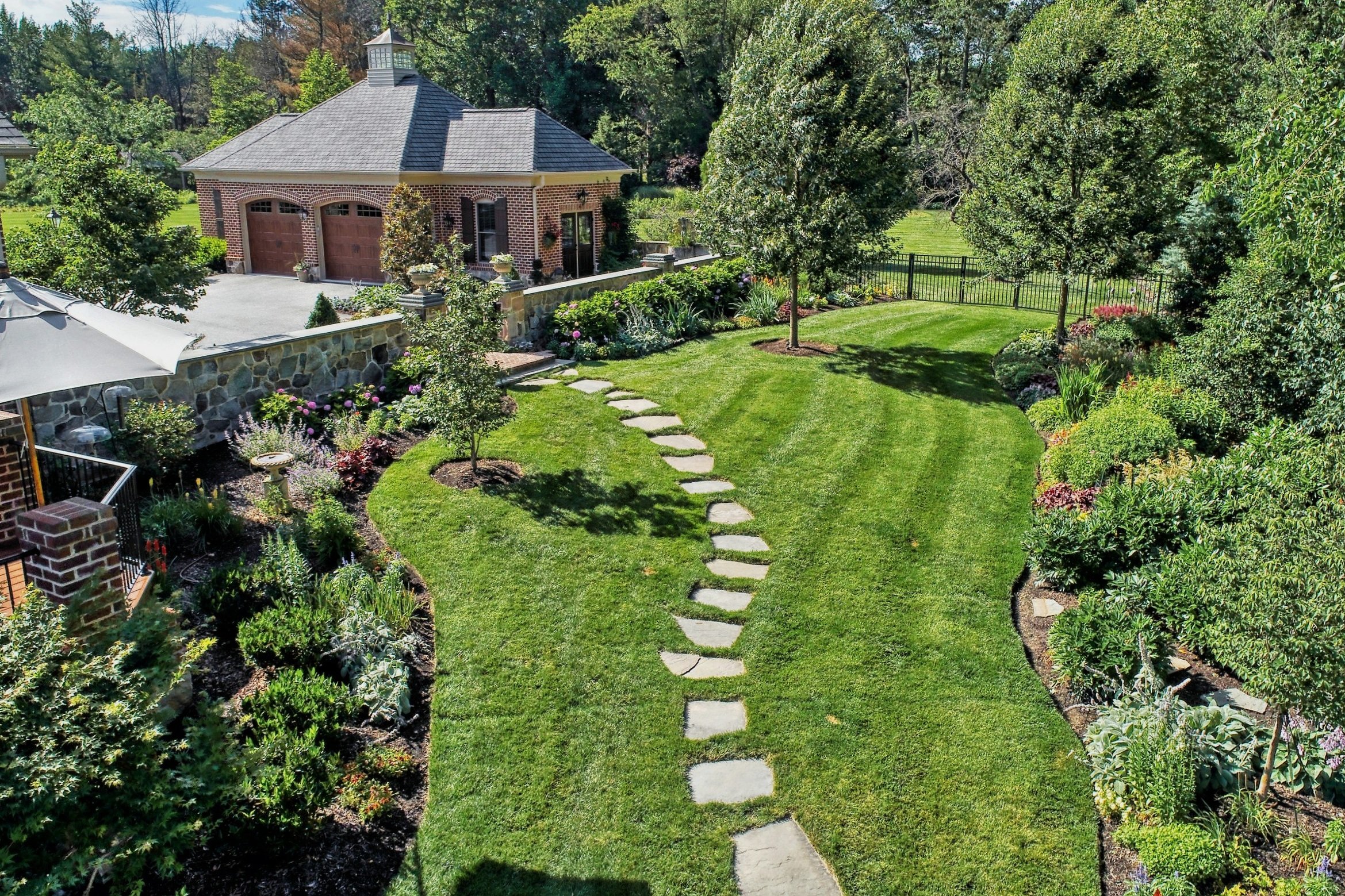
BLOG
Spark New Landscape Ideas
Dive into our blog and discover inspiring ideas, expert tips, and creative solutions for all things landscape design and maintenance. Whether you’re dreaming of a lush oasis or a sleek outdoor living space, our posts will guide you every step of the way.

7 Ways Mosquito Control Enhances Outdoor Living in Spry, PA & York, PA
If you’ve ever tried to enjoy a summer evening outdoors in South Central Pennsylvania, you know how quickly mosquitoes can ruin it. With the proper mosquito control in Spry, PA, and York, PA, your outdoor areas become more than just tolerable. They become a valid extension of your home. The key is having a professional team assess the property, identify breeding areas, and implement solutions tailored to your specific layout and environment. Our mosquito control process is designed to give homeowners back their backyards without the stress of managing sprays or setups.

How Outdoor Lighting in Spry, PA Transforms Your Home’s Nighttime Appeal
Your home deserves to shine not only during the day but also when the sun goes down. Professional outdoor lighting in Spry, PA, is a game-changer that transforms your property after dark into a captivating and inviting space. Our team of skilled professionals manages every aspect of your outdoor lighting project, from design to installation. We ensure the lighting highlights your home’s best features while creating a warm and welcoming atmosphere for your evenings.

Landscaping & Tree Services in York, PA That Add Privacy, Shade, and Peace of Mind
If your landscape feels exposed, overheated, or chaotic, the right combination of plantings and professional tree work can transform your outdoor space into a secluded, serene retreat. With Hively’s landscaping & tree services in York, PA, homeowners gain more than greenery—they get privacy where it matters, shade when it counts, and peace of mind that lasts through every season.

5 Outdoor Kitchen and Outdoor Lighting Combos That Work Beautifully in York and Dallastown, PA
The right combination of an outdoor kitchen and outdoor lighting in York and Dallastown, PA, can completely change how you use your backyard. When these two features work together, they support the way you gather, prepare food, and spend time with others outdoors, long after the sun goes down. Every detail matters, from the layout of cooking elements to how the lighting brings them to life.

What’s Included in Full-Service Lawn Care and Tree Services in New Freedom and Shiloh, PA?
If your lawn and trees are not where they should be regarding health and appearance, it may be time for a more complete approach. Our expert team offers full-service lawn care and tree services in New Freedom, PA, and Shiloh, PA, residents, who rely on us to keep their properties in excellent condition. When professionals handle every element of your landscape, results come faster, last longer, and require no guesswork.
Here’s what full-service means and what you can expect when both your lawn and trees are cared for by one experienced team.
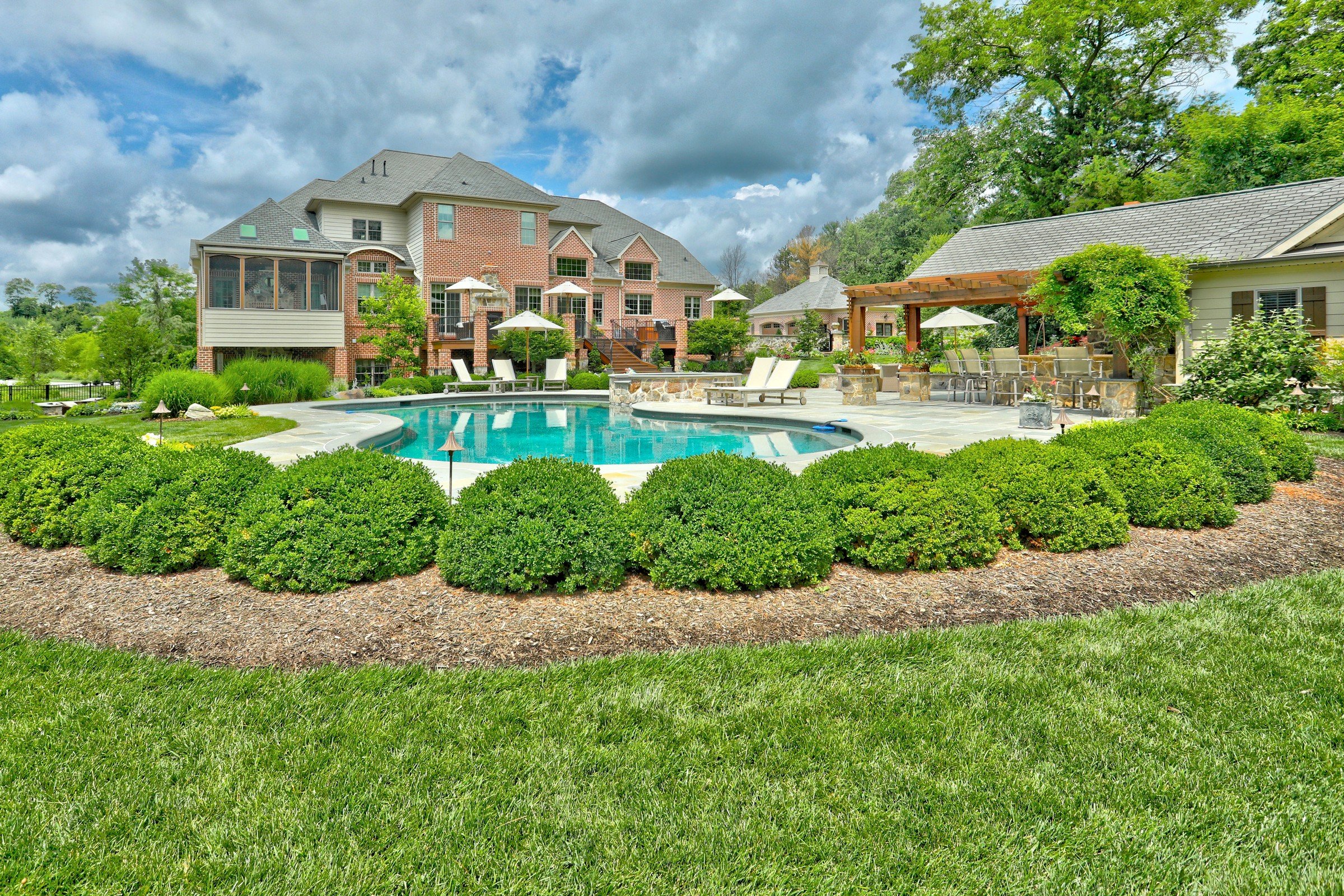
Key Elements Every Landscape Design Plan in York, PA Should Have
Landscape design in York, PA is more than picking out a few plants and placing a patio. It’s about creating an experience that reflects your lifestyle, highlights the natural surroundings, and makes outdoor living feel effortless. In this blog, we’ll walk you through the essential elements that make any landscape design feel complete, cohesive, and deeply rooted in the way you want to live outside. Keep reading to see what truly brings a yard to life

Top Outdoor Lighting Ideas That Elevate York, PA Homes After Dark
Professional outdoor lighting in York, PA enhances how you experience your landscape once the sun goes down. Thoughtful lighting creates usable, welcoming outdoor spaces that support entertaining, relaxing, or simply enjoying the natural beauty of your surroundings. A landscape designer will approach your lighting layout with intention—selecting the right fixtures, aiming them with care, and ensuring every feature of your outdoor living space looks and feels complete after dark.

8 Reasons to Combine Lawn Care and Mosquito Control for a Better Backyard in Spry, PA
When lawn care and mosquito control in Spry, PA, work in sync, your backyard becomes more functional, more comfortable, and better suited for outdoor living. These services influence each other more than you might think. Poor turf conditions can attract mosquitoes, and standing water in low areas can make even the best outdoor features unusable. A combined approach ensures every square foot supports a healthy landscape and a better experience outside.
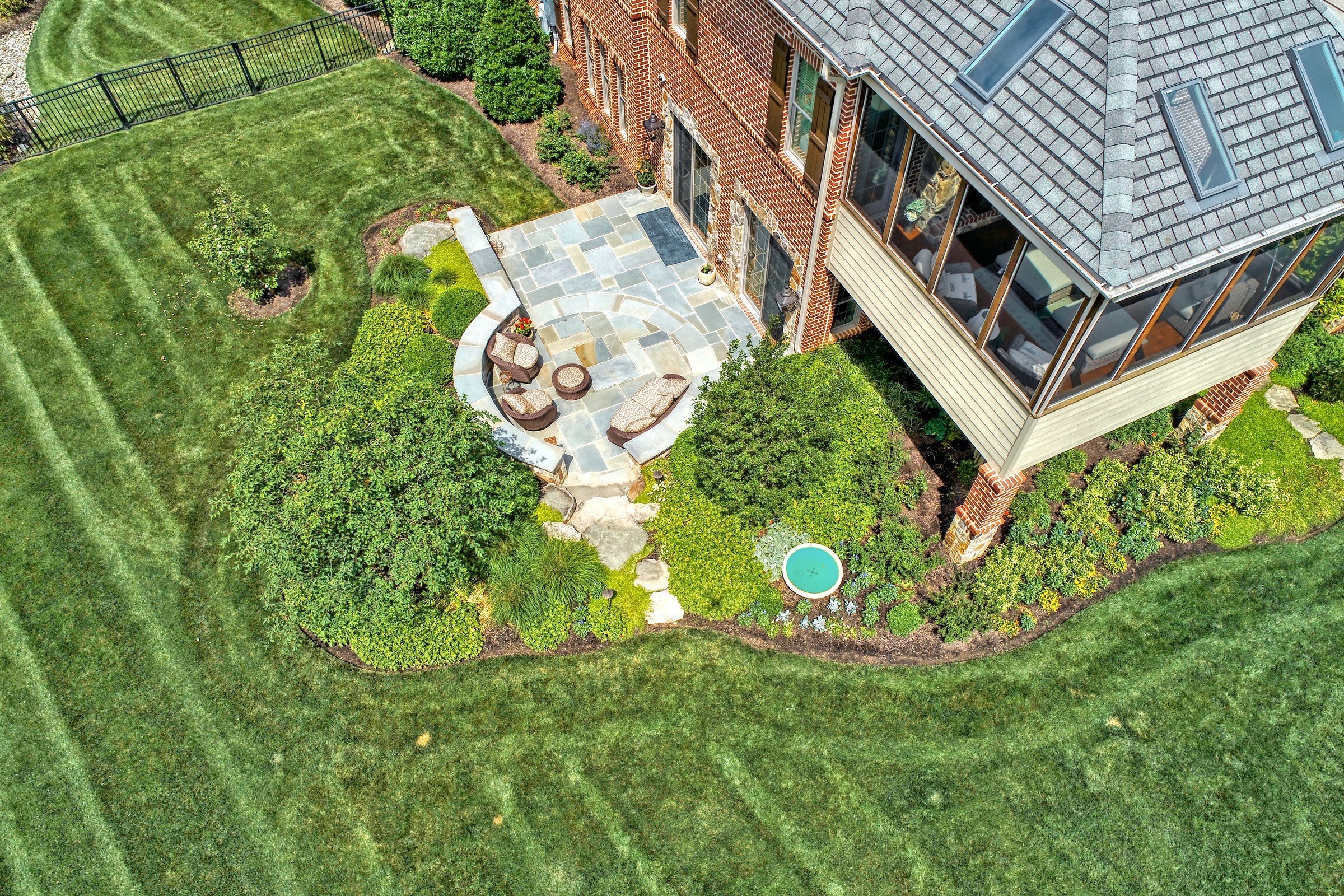
Lawn Fertilization in York, PA That Supports Stronger, Greener Grass From the Roots Up
When we take on lawn fertilization in York, PA, our goal goes beyond just greening up the surface. Healthy grass starts underground. That’s where the nutrients are absorbed, and where the structure of the soil determines whether roots will thrive or struggle. We focus on treatments that work with your soil’s biology and deliver consistent, seasonally appropriate support for the type of turf you have.
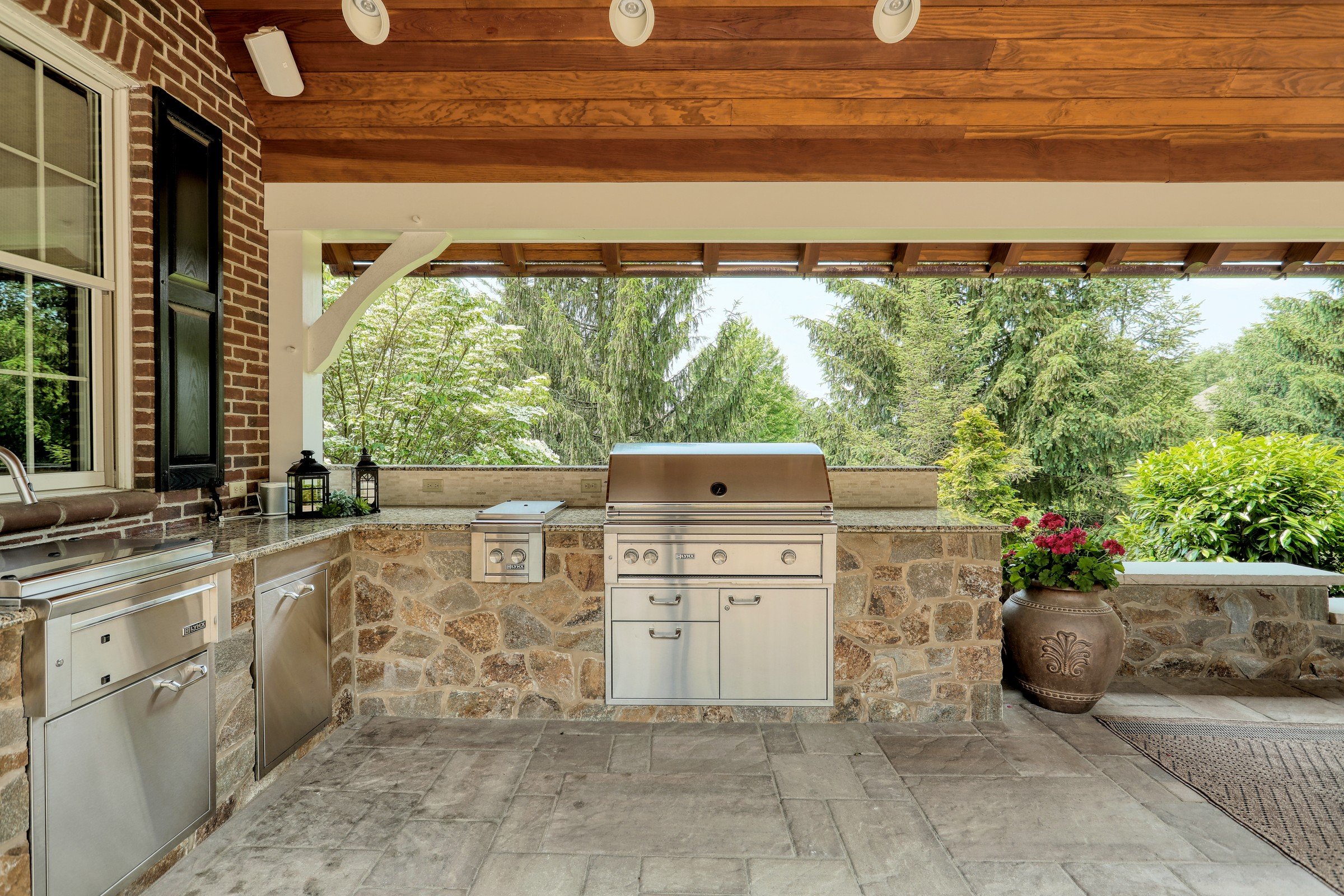
Custom Outdoor Kitchen in York, PA: Entertaining Made Easy
An outdoor kitchen in York, PA, transforms your backyard into a culinary haven, making it easier to host friends and family. Whether you love grilling or want to create a full outdoor dining experience, having a well-designed kitchen outdoors adds convenience, functionality, and a touch of luxury to your home. When you hire our expert landscape services, you are working with professionals who take care of every detail, from design to installation. Here’s what you can expect when you decide to hire an experienced team to bring your custom outdoor kitchen to life.

How Lawn Care and Mosquito Control in Dallastown, PA Keep Your Backyard Enjoyable
A well-maintained outdoor space offers a place to relax, entertain, and enjoy time outside, but without the right care, it can quickly become overrun by weeds, thinning grass, and biting pests. Lawn care and mosquito control in Dallastown, PA work together to ensure the landscape remains lush and comfortable throughout the warmer months.
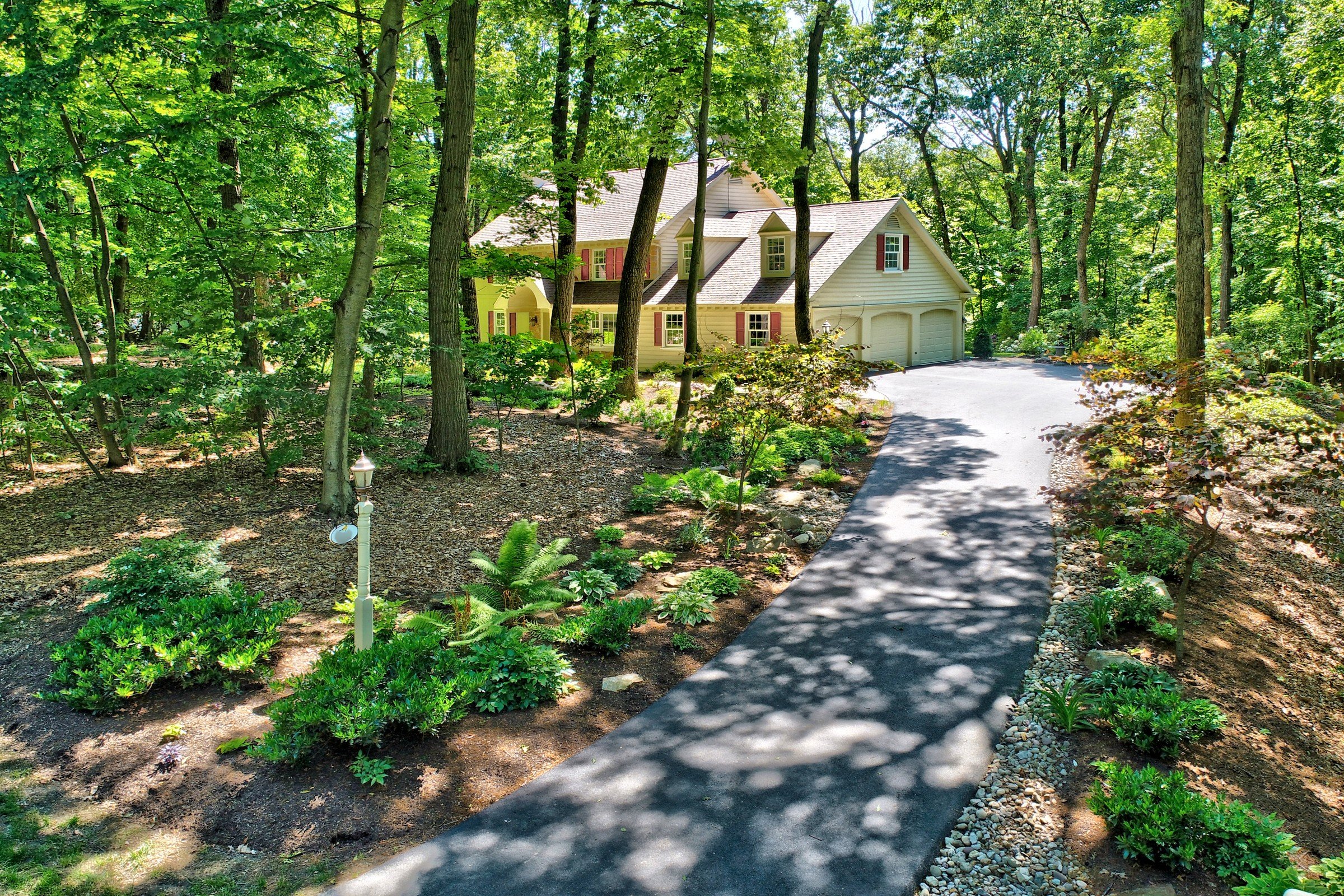
Essential Tree Services in York, PA: What to Look For
Taking care of the trees on a property requires more than occasional trimming. Professional tree services in York, PA ensure that trees remain strong, healthy, and structurally sound. Whether addressing overgrown branches, improving the surrounding landscape, or assessing overall health, the right approach keeps trees thriving.

Outdoor Lighting and Landscape Design in Stonybrook, PA: Enhance Your Home’s Appeal and Ambiance
Let’s be honest—your yard looks great during the day, but what happens after sunset? Does it fade into the darkness, or does it transform into a glowing, inviting space? Outdoor lighting and landscape design in Stonybrook, PA, can turn an ordinary yard into something unforgettable. The right lighting brings out the best features, sets the perfect mood, and makes every inch of your outdoor space feel intentional. Professionals don’t just add lights—they design an experience. And once you see the results, you’ll wonder why you didn’t do it sooner.
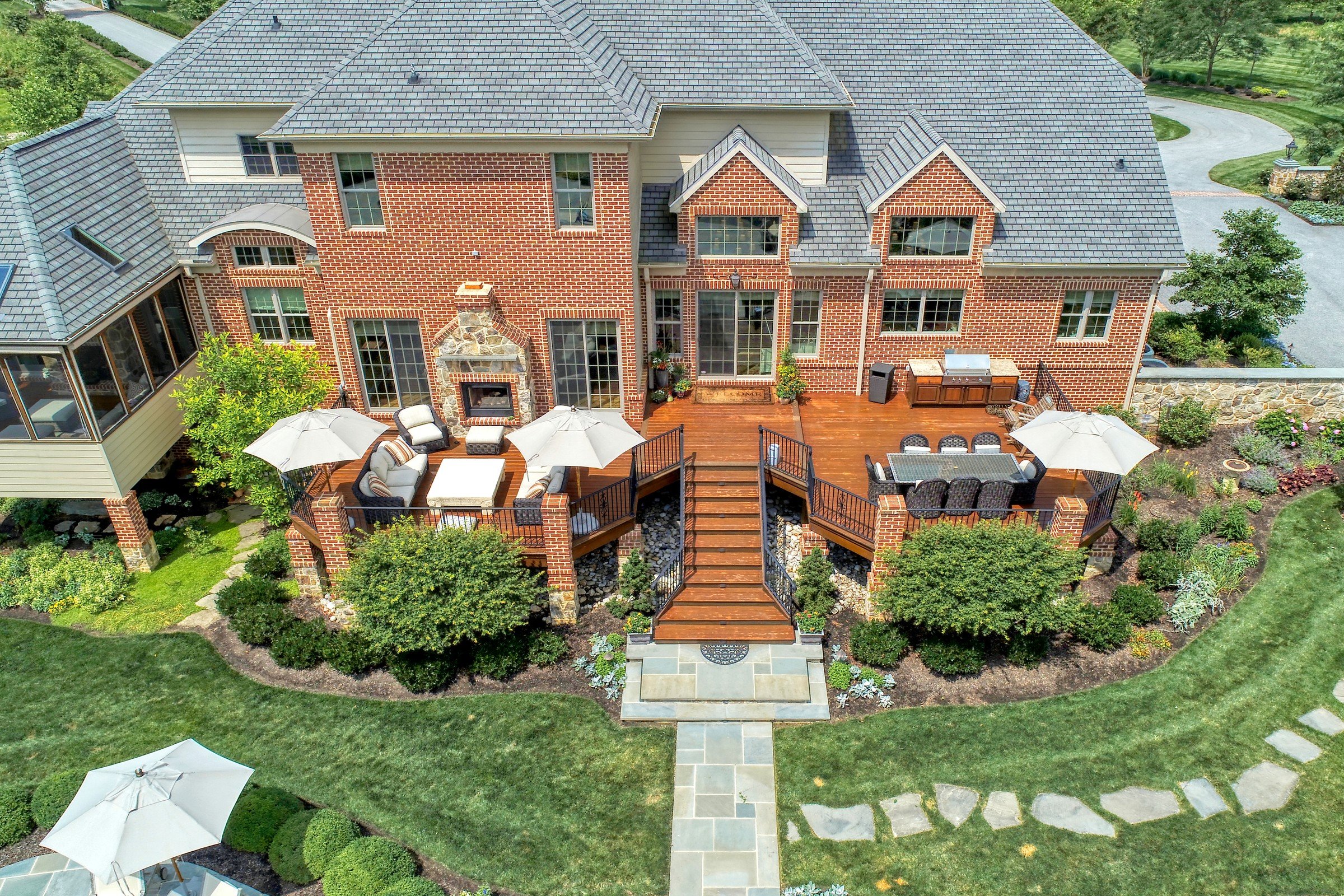
5 Creative Landscaping and Outdoor Kitchen Ideas for Stunning Outdoor Spaces in Shiloh and Lake Meade, PA
Dreaming of transforming your backyard into a luxurious retreat? In Shiloh and Lake Meade, PA, where the seasons bring a mix of warmth and chill, crafting the perfect outdoor space is essential. With professional landscaping and outdoor kitchen designs, you can create an inviting environment for every occasion. Whether you’re hosting a summer barbecue or sipping coffee by the fire on a crisp autumn morning, a well-designed outdoor space can enhance every moment. Here are five innovative ideas to elevate your outdoor living experience.
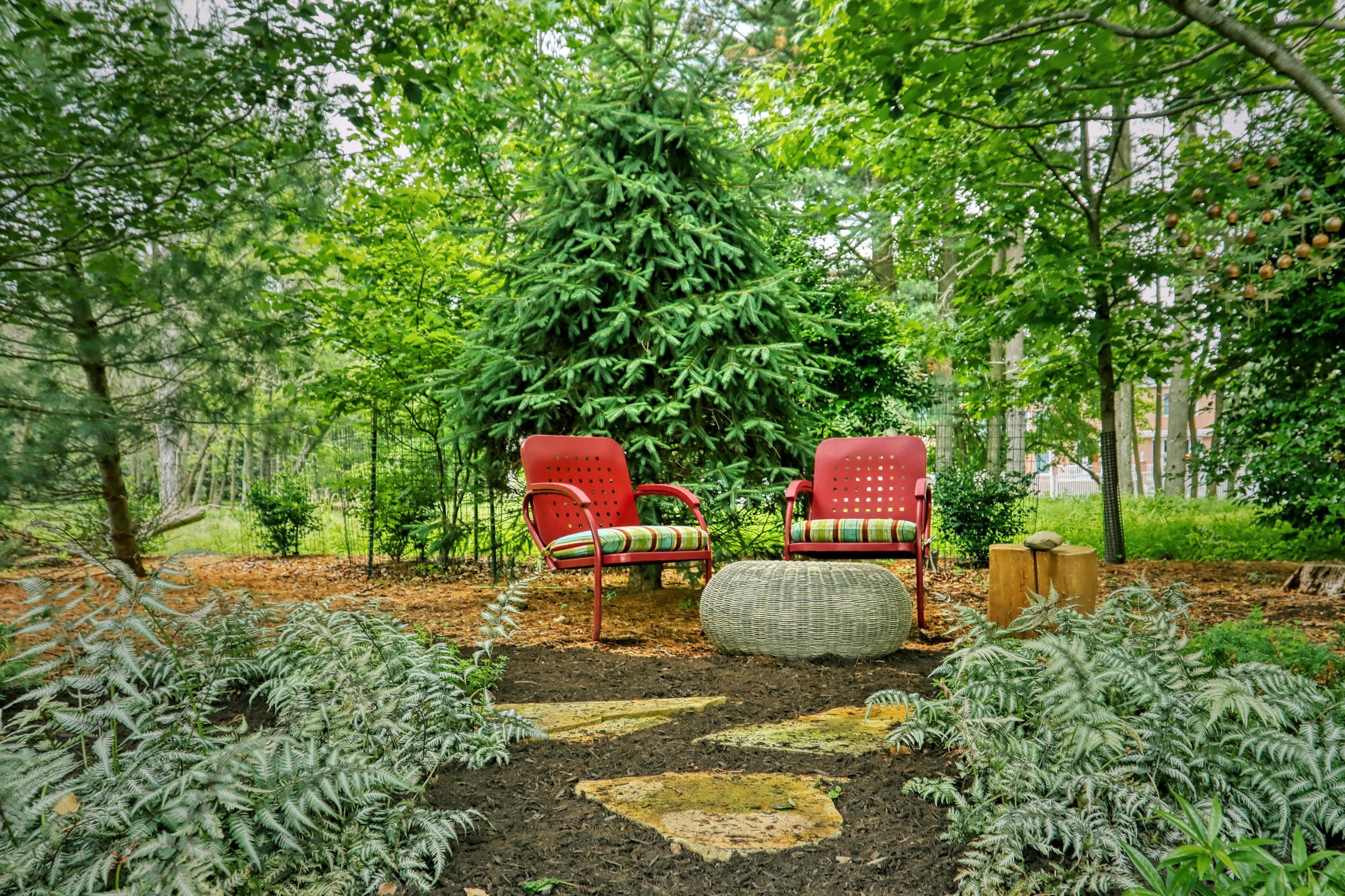
Tree Services & Mosquito Control in Stonybrook, PA: Keep Your Yard Healthy and Bug-Free
A lush landscape can quickly lose its charm when overgrown trees and buzzing mosquitoes take over. Professional tree services & mosquito control in Stonybrook, PA can transform your outdoor space into a peaceful retreat. Healthy trees add beauty and shade, while effective mosquito treatments let you enjoy your yard without the nuisance of bites. Experts can handle pruning, disease prevention, and pest control so you can relax and take in your surroundings without worry.

How Tree Services in Stonybrook and Freedom, PA, Can Enhance Your Property’s Health and Beauty
When it comes to enhancing your property's health and beauty, tree services in Stonybrook and Freedom, PA, offer a unique and powerful solution. Trees are more than just beautiful additions to your landscape; they are living organisms that play a vital role in your environment. From improving air quality to providing shade and shelter, trees are essential for a vibrant and healthy outdoor space. In this blog, discover how expert tree care can transform your landscape and bring lasting benefits to your home.
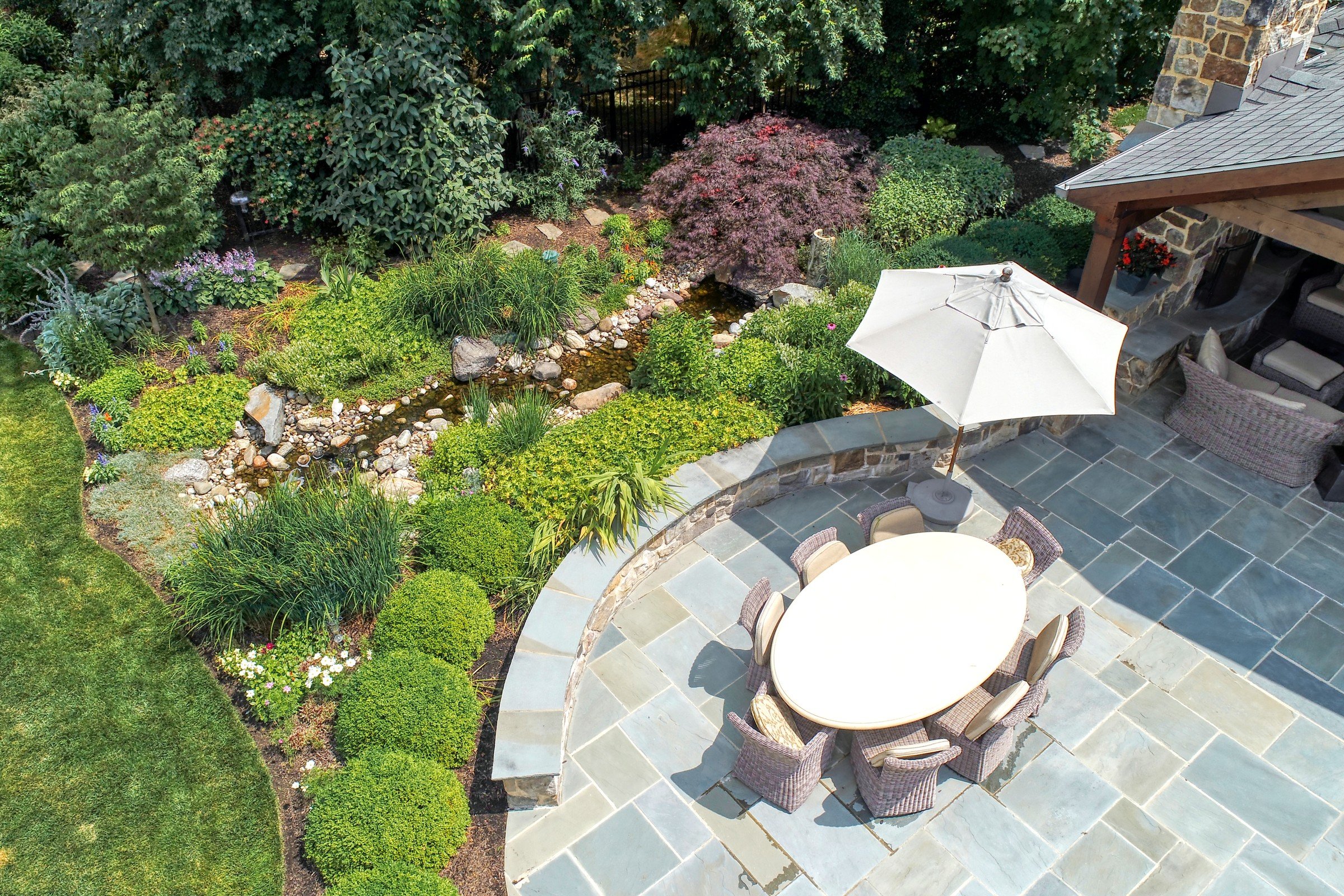
Transform Your Outdoor Space With Expert Landscaping in Shiloh and Stonybrook, PA
Landscaping in Shiloh and Stonybrook, PA, is a powerful way to enhance the beauty and functionality of your outdoor space. Whether you're looking to create a tranquil retreat, host memorable outdoor gatherings, or boost your home’s architectural appeal, professional landscaping services can transform your backyard into a stunning extension of your home. With the right team, every corner of your outdoor space can become a place of beauty and serenity.
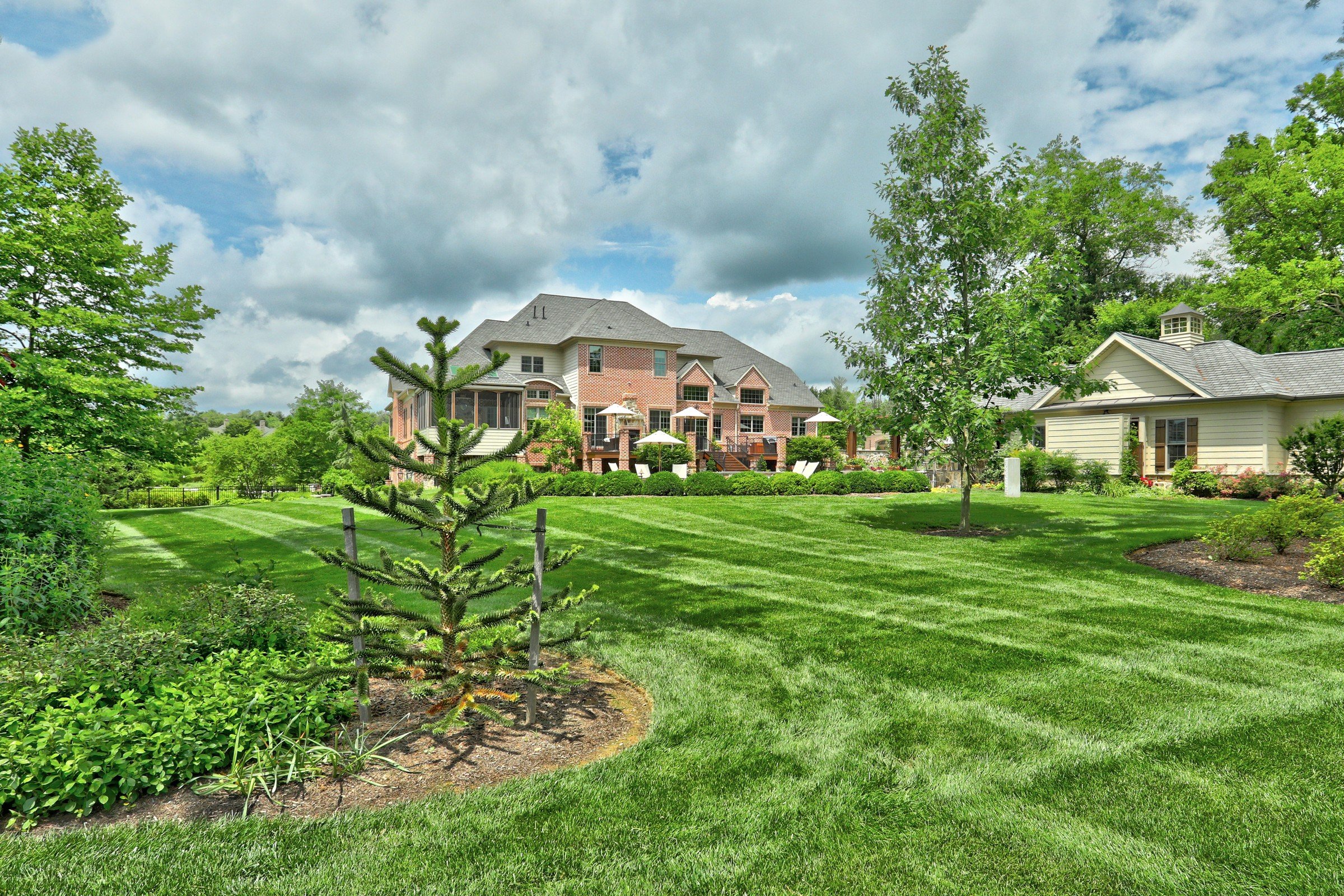
The Best Lawn Care and Lawn Fertilization Practices for Lush Lawns in York, PA
Maintaining a lush, vibrant lawn is the desire of many homeowners. A beautifully manicured lawn not only enhances the aesthetic appeal of your home but also creates a welcoming space for relaxation, play, and outdoor entertaining. Achieving a healthy, thriving lawn requires a combination of efficient lawn care and lawn fertilization in York, PA. Here’s a detailed guide to the best expert lawn care and lawn fertilization practices to keep your lawn lush and green.

How Expert Landscaping Creates the Perfect Setting for Relaxing Outdoor Brunches in Grantley and Freedom, PA
Hosting outdoor brunches becomes effortless when your space is designed with comfort and style in mind. For homeowners in Grantley and Freedom, PA, expert landscaping can turn an ordinary backyard into an inviting setting perfect for enjoying meals with friends and family. A well-designed outdoor area adds ambiance, comfort, and functionality for every gathering, making it easier to enjoy quality time outdoors.
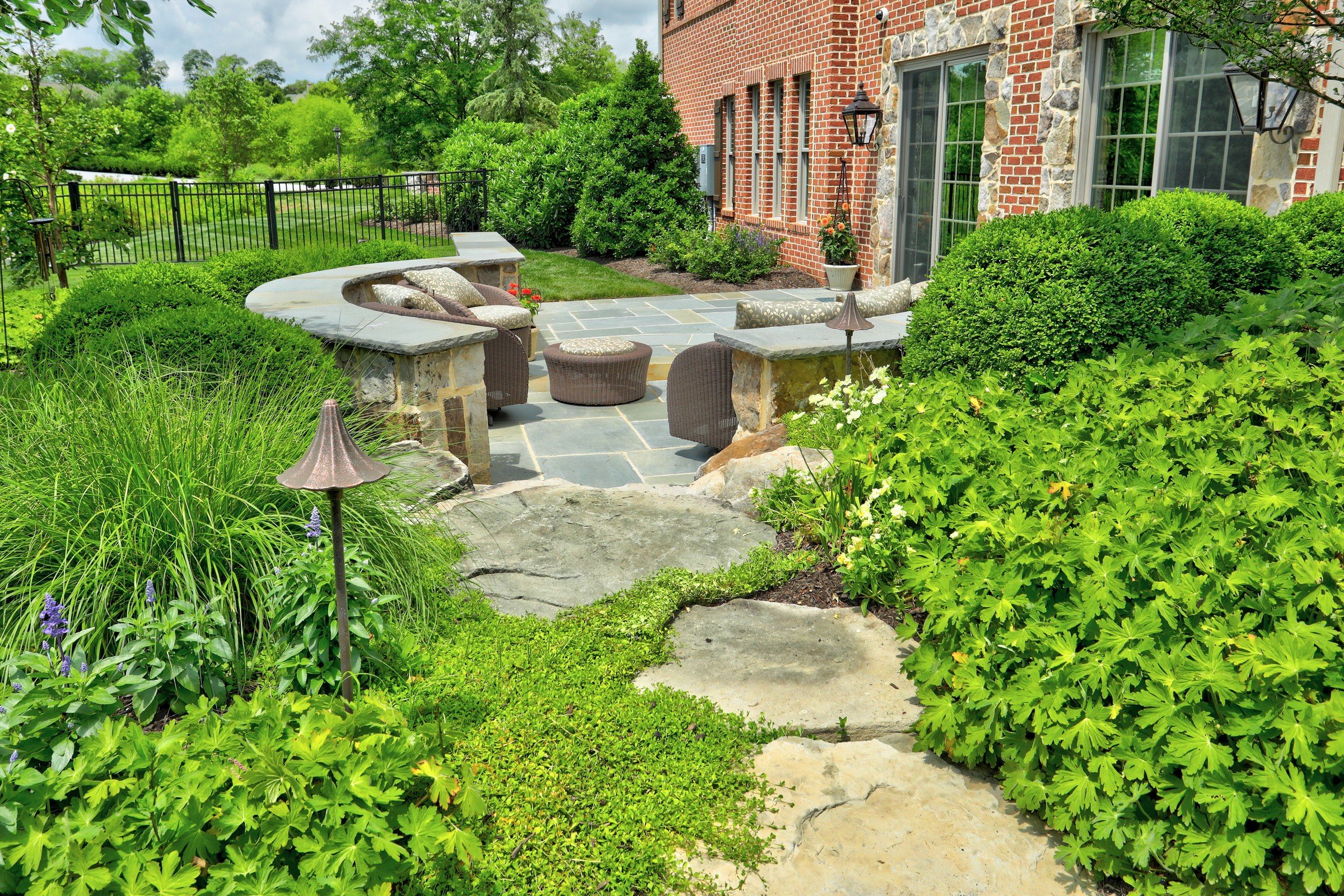
6 Landscape Design Ideas for Creating the Coziest Outdoor Reading Nook in Spry and Shiloh, PA
If you're a homeowner in Spry or Shiloh, PA, and want to create the perfect outdoor space for reading, relaxation, and unwinding, professional landscape design can help bring your vision to life. Expert landscape designers can help you craft the coziest and most inviting outdoor retreat by choosing the right elements, materials, and layout. Here are six landscape design ideas to inspire your perfect outdoor reading nook.
All Articles
-
June 2025
- Jun 19, 2025 7 Ways Mosquito Control Enhances Outdoor Living in Spry, PA & York, PA Jun 19, 2025
- Jun 10, 2025 How Outdoor Lighting in Spry, PA Transforms Your Home’s Nighttime Appeal Jun 10, 2025
- Jun 5, 2025 Landscaping & Tree Services in York, PA That Add Privacy, Shade, and Peace of Mind Jun 5, 2025
-
May 2025
- May 30, 2025 5 Outdoor Kitchen and Outdoor Lighting Combos That Work Beautifully in York and Dallastown, PA May 30, 2025
- May 22, 2025 What’s Included in Full-Service Lawn Care and Tree Services in New Freedom and Shiloh, PA? May 22, 2025
- May 15, 2025 Key Elements Every Landscape Design Plan in York, PA Should Have May 15, 2025
-
April 2025
- Apr 18, 2025 Top Outdoor Lighting Ideas That Elevate York, PA Homes After Dark Apr 18, 2025
- Apr 11, 2025 8 Reasons to Combine Lawn Care and Mosquito Control for a Better Backyard in Spry, PA Apr 11, 2025
- Apr 2, 2025 Lawn Fertilization in York, PA That Supports Stronger, Greener Grass From the Roots Up Apr 2, 2025
-
March 2025
- Mar 24, 2025 Custom Outdoor Kitchen in York, PA: Entertaining Made Easy Mar 24, 2025
- Mar 20, 2025 How Lawn Care and Mosquito Control in Dallastown, PA Keep Your Backyard Enjoyable Mar 20, 2025
- Mar 17, 2025 Essential Tree Services in York, PA: What to Look For Mar 17, 2025
-
February 2025
- Feb 24, 2025 Outdoor Lighting and Landscape Design in Stonybrook, PA: Enhance Your Home’s Appeal and Ambiance Feb 24, 2025
- Feb 20, 2025 5 Creative Landscaping and Outdoor Kitchen Ideas for Stunning Outdoor Spaces in Shiloh and Lake Meade, PA Feb 20, 2025
- Feb 13, 2025 Tree Services & Mosquito Control in Stonybrook, PA: Keep Your Yard Healthy and Bug-Free Feb 13, 2025
-
January 2025
- Jan 27, 2025 How Tree Services in Stonybrook and Freedom, PA, Can Enhance Your Property’s Health and Beauty Jan 27, 2025
- Jan 25, 2025 Transform Your Outdoor Space With Expert Landscaping in Shiloh and Stonybrook, PA Jan 25, 2025
- Jan 21, 2025 The Best Lawn Care and Lawn Fertilization Practices for Lush Lawns in York, PA Jan 21, 2025
-
December 2024
- Dec 28, 2024 How Expert Landscaping Creates the Perfect Setting for Relaxing Outdoor Brunches in Grantley and Freedom, PA Dec 28, 2024
- Dec 16, 2024 6 Landscape Design Ideas for Creating the Coziest Outdoor Reading Nook in Spry and Shiloh, PA Dec 16, 2024
- Dec 14, 2024 Enhance Your Lawn for Outdoor Lounging With Expert Lawn Care and Lawn Fertilization in Dallastown, PA Dec 14, 2024
-
November 2024
- Nov 26, 2024 7 Ways Landscape Design and an Outdoor Kitchen in Stonybrook, PA, Create the Perfect Space for Summer BBQs Nov 26, 2024
- Nov 22, 2024 Designing the Ideal Outdoor Space for Alfresco Dinners With Expert Landscaping in Shiloh and Stonybrook, PA Nov 22, 2024
- Nov 14, 2024 Ready for Alfresco Wine Tastings? 4 Ways York, PA, Lawn Care and Lawn Fertilization Experts Prep Your Lawn Nov 14, 2024
-
October 2024
- Oct 29, 2024 4 Innovative Landscape Design Ideas for Outdoor Game Nights in Stonybrook, PA Oct 29, 2024
- Oct 18, 2024 Lush Lawns for Family Picnics: Expert Lawn Care and Lawn Fertilization Services in Grantley, PA Oct 18, 2024
- Oct 4, 2024 Transform Your Backyard for Outdoor Movie Nights With Outdoor Lighting in York and Grantley, PA Oct 4, 2024
-
September 2024
- Sep 25, 2024 Landscape Design for Tranquil Ponds and Fountains in Lake Meade and New Freedom, PA Sep 25, 2024
- Sep 21, 2024 Targeted Lawn Fertilization Solutions for Thick, Green Lawns in York, PA and Shiloh, PA Sep 21, 2024
- Sep 5, 2024 Tailored Lawn Care Programs in Dallastown, PA and Shiloh, PA: Enhancing Turf Health and Appearance Sep 5, 2024
-
August 2024
- Aug 21, 2024 Precision Lawn Fertilization in Dallastown, PA: Techniques for Enhanced Turf Health Aug 21, 2024
- Aug 12, 2024 Vertical Landscape Design in Shiloh, PA, for Aesthetic Outdoor Living Areas Aug 12, 2024
- Aug 5, 2024 The Benefits of a Custom Seasonal Lawn Care Program to Enhance Grass Health in York and Spry, PA Aug 5, 2024
-
July 2024
- Jul 30, 2024 Grantley, PA: Create a Peaceful, Shade-Filled Backyard Retreat With Expert Tree Services Jul 30, 2024
- Jul 18, 2024 Entertain and Dine Al Fresco With a Luxurious Outdoor Kitchen in Shiloh, PA Jul 18, 2024
- Jul 11, 2024 Boost Your Lawn’s Health With Expert Fertilization in Dallastown, PA Jul 11, 2024
-
June 2024
- Jun 20, 2024 Build Your Ideal Outdoor Entertaining Space With Expert Landscape Design in Grantley, PA Jun 20, 2024
- Jun 13, 2024 With Reliable Lawn Care Services in Dallastown, PA, You Can Host Outdoor Events With Confidence Jun 13, 2024
- Jun 10, 2024 Water-Conscious Landscaping Jun 10, 2024
- Jun 5, 2024 Create the Perfect Nighttime Ambiance for Your Gatherings With Outdoor Lighting in York, PA Jun 5, 2024
-
May 2024
- May 15, 2024 Want a New Patio? Consider the Options May 15, 2024
-
April 2024
- Apr 12, 2024 Watering Restrictions Apr 12, 2024
-
March 2024
- Mar 11, 2024 Planting Today – Planning for the Future Mar 11, 2024
-
February 2024
- Feb 9, 2024 Summer Landscapes Start Now! Feb 9, 2024
-
January 2024
- Jan 27, 2024 Your Landscape Is a GROWING Investment Jan 27, 2024
-
November 2023
- Nov 9, 2023 Planning Ahead for 2024 Landscape Projects Nov 9, 2023
-
October 2023
- Oct 8, 2023 Fall Is Ideal for Softscaping Oct 8, 2023
-
September 2023
- Sep 19, 2023 Water Usage Restrictions Sep 19, 2023
-
August 2023
- Aug 6, 2023 Dealing with Problem Slopes in the Landscape Aug 6, 2023
-
July 2023
- Jul 15, 2023 Enhance Your Evenings with Landscaping Lighting Jul 15, 2023
-
June 2023
- Jun 8, 2023 Drought Conditions Starting Already Jun 8, 2023
-
May 2023
- May 5, 2023 Natural Screens for Protection and Privacy May 5, 2023
-
April 2023
- Apr 14, 2023 Drainage Solutions For Your Landscape Apr 14, 2023
-
March 2023
- Mar 15, 2023 Welcome the World with a Perfect Entry Mar 15, 2023
-
February 2023
- Feb 7, 2023 Looking Ahead to Summer Entertaining! Feb 7, 2023
-
January 2023
- Jan 24, 2023 Caring for Your Green Investment Jan 24, 2023
-
October 2022
- Oct 8, 2022 Fired Up for Fall! Oct 8, 2022
-
September 2022
- Sep 14, 2022 Let Us Help You Get Ready for Fall Sep 14, 2022
-
August 2022
- Aug 9, 2022 Fall Is For Planting, Fall is for Planning Aug 9, 2022
-
July 2022
- Jul 9, 2022 Luxury Outdoor Living Jul 9, 2022
-
June 2022
- Jun 27, 2022 Water in the Landscape Jun 27, 2022
-
May 2022
- May 16, 2022 Annual and Perennial Floral Displays May 16, 2022
-
April 2022
- Apr 26, 2022 Shape Your Landscape With Retaining Walls Apr 26, 2022
-
March 2022
- Mar 18, 2022 Thirsty Plants Help Dry It Up Mar 18, 2022
-
February 2022
- Feb 18, 2022 Caring for Trees & Shrubs Feb 18, 2022
-
November 2021
- Nov 11, 2021 Winter Is Time For Hardscape Planning Nov 11, 2021
-
October 2021
- Oct 15, 2021 Warm Up This Fall Oct 15, 2021
-
September 2021
- Sep 3, 2021 Fall Is For Planting Sep 3, 2021
-
August 2021
- Aug 17, 2021 Going Native Aug 17, 2021
-
July 2021
- Jul 13, 2021 Cover Some Ground Jul 13, 2021
-
June 2021
- Jun 23, 2021 Navigating Supply & Demand Jun 23, 2021
- Jun 7, 2021 Moving Water Jun 7, 2021
-
May 2021
- May 21, 2021 Landscaping for Definition and Privacy May 21, 2021
-
April 2021
- Apr 6, 2021 Mulch Time! Apr 6, 2021
-
March 2021
- Mar 12, 2021 Is Your Lawn Drowning? Mar 12, 2021
-
February 2021
- Feb 15, 2021 Discover the World of Outdoor Living Feb 15, 2021
- Feb 5, 2021 If You Can Dream It, We Can Do It Feb 5, 2021
-
January 2021
- Jan 22, 2021 Long-Range Planning Jan 22, 2021
-
November 2020
- Nov 18, 2020 Thank You! Nov 18, 2020
-
October 2020
- Oct 22, 2020 Time For Fall Cleanups Oct 22, 2020
- Oct 15, 2020 Fall Is The Time To Plant Oct 15, 2020
-
August 2020
- Aug 13, 2020 Variety for Your Landscape Aug 13, 2020
-
July 2020
- Jul 10, 2020 Best Practices: Fertilization and Watering Jul 10, 2020
-
June 2020
- Jun 5, 2020 Flood and Drought Woes Jun 5, 2020
-
May 2020
- May 13, 2020 A Grand Entrance May 13, 2020
-
April 2020
- Apr 10, 2020 Spring Cleaning Apr 10, 2020
-
March 2020
- Mar 23, 2020 COVID-19 Policies and Procedures Updated (5/25/2021) Mar 23, 2020
- Mar 16, 2020 Enjoyable Outdoor Living Mar 16, 2020
- Mar 11, 2020 Important Coronavirus Information Mar 11, 2020
- Mar 2, 2020 Timely Trimming Mar 2, 2020
-
June 2019
- Jun 4, 2019 What's Wrecking Your Landscape? Jun 4, 2019
-
April 2019
- Apr 15, 2019 Just Mulch It (but do it correctly!) Apr 15, 2019
-
January 2019
- Jan 20, 2019 Avoid Frost Heave Damage Jan 20, 2019
-
December 2018
- Dec 5, 2018 Think Spring! Deck vs. Patio Installation Dec 5, 2018
-
November 2018
- Nov 28, 2018 Commercial Snow Removal Budgeting: Avoid Getting Buried This Winter! Nov 28, 2018
- Nov 26, 2018 Spotted Lanternfly Pest Alert Nov 26, 2018
- Nov 21, 2018 Happy Thanksgiving! Nov 21, 2018
-
October 2018
- Oct 22, 2018 Planting Fall Bulbs: What to Know and Expect Oct 22, 2018
- Oct 17, 2018 Benefits of Fall Fertilizing Oct 17, 2018
- Oct 1, 2018 Fall is For Overseeding Oct 1, 2018
-
September 2018
- Sep 21, 2018 5 Benefits of Aerating Your Lawn Sep 21, 2018
- Sep 10, 2018 Trimming vs Edging Sep 10, 2018
- Sep 6, 2018 Help! There Are Mushrooms in My Mulch Sep 6, 2018
-
August 2018
- Aug 15, 2018 Tips for Dramatic Outdoor Lighting Aug 15, 2018
-
July 2018
- Jul 24, 2018 Team Spotlight: Jeff Barker Jul 24, 2018
- Jul 19, 2018 Lawn Care Tips During a Drought Jul 19, 2018
- Jul 17, 2018 Summertime Pest Control Jul 17, 2018
- Jul 11, 2018 Lawn & Landscape Care While You’re Away Jul 11, 2018
-
June 2018
- Jun 18, 2018 Landscaping Around a Pool Jun 18, 2018
-
May 2018
- May 25, 2018 Team Spotlight: Pam Grove May 25, 2018
- May 17, 2018 Preparing your Landscape for Summer May 17, 2018
- May 10, 2018 Advantages & Disadvantages of Drip Irrigation May 10, 2018
-
April 2018
- Apr 27, 2018 Team Spotlight: Tyler Smith Apr 27, 2018
- Apr 24, 2018 Spring Soil Preparation Tips Apr 24, 2018
- Apr 17, 2018 8 Springtime Pests That Will Destroy Your Landscape Apr 17, 2018
-
March 2018
- Mar 23, 2018 Essential Spring Lawn Mower Maintenance Tips Mar 23, 2018
- Mar 20, 2018 Team Spotlight: Dave Wildasin Mar 20, 2018
- Mar 8, 2018 The Fight Against Crabgrass: You CAN Win! Mar 8, 2018
-
February 2018
- Feb 23, 2018 Top 5 Things to Ask Your Landscaping Company Feb 23, 2018
- Feb 8, 2018 Deer Problems? Here’s What You Need To Know Feb 8, 2018
- Feb 6, 2018 Team Spotlight: Matt Vandewater Feb 6, 2018
- Feb 2, 2018 Benefits of a Lawn Care Program Feb 2, 2018
-
January 2018
- Jan 31, 2018 Come Visit Us at the York Builders Home & Garden Show Jan 31, 2018
-
December 2017
- Dec 14, 2017 January & February Landscaping Tips Dec 14, 2017
-
September 2017
- Sep 28, 2017 Up Your Curb Appeal with Professional Landscaping Services Sep 28, 2017
- Sep 21, 2017 Add Color to Your Landscape with These Fall Flowers Sep 21, 2017
-
August 2017
- Aug 31, 2017 Prepare Your Landscape For Winter with Fall Lawn Care Aug 31, 2017
- Aug 17, 2017 Lawn Aeration in the Fall Creates Healthy Landscapes Aug 17, 2017
-
July 2017
- Jul 18, 2017 Container Gardening Tips Jul 18, 2017
-
June 2017
- Jun 23, 2017 It’s Hot! Keep Your Landscape Happy with These Summer Weather Tips Jun 23, 2017
-
April 2017
- Apr 27, 2017 Choosing the Right Herbicide for Ultimate Weed Control Apr 27, 2017
-
March 2017
- Mar 15, 2017 Spring Garden and Landscape Preparation Mar 15, 2017
-
February 2017
- Feb 27, 2017 How Warm Winter Weather is Harming Your Plants Feb 27, 2017
- Feb 1, 2017 Rock Salt Alternatives: You Won’t Believe What is Destroying Your Walkway Feb 1, 2017
-
December 2016
- Dec 12, 2016 Winterizing Your Deck, Patio and Other Outdoor Spaces Dec 12, 2016
-
November 2016
- Nov 16, 2016 Winter Planning Leads to Early Spring Installation Nov 16, 2016
-
October 2016
- Oct 24, 2016 5 Steps to Better Fall Lawn Care Oct 24, 2016
-
September 2016
- Sep 27, 2016 Add a Dash of Color to Your Fall Landscape Sep 27, 2016
-
August 2016
- Aug 24, 2016 Improve Ambiance, Comfort & Safety with Simple Landscape Lighting Aug 24, 2016
- Aug 24, 2016 Ensure Landscape Success with Simple Soil Testing Aug 24, 2016
-
June 2016
- Jun 21, 2016 Natural Pest Control Jun 21, 2016
-
May 2016
- May 24, 2016 3 Options for Proactive Landscape Maintenance May 24, 2016
-
April 2016
- Apr 15, 2016 5 Lawn Care Tips to Keep Your Grass the Greenest on the Block Apr 15, 2016
-
March 2016
- Mar 31, 2016 5 Things to Look for In Your Next Landscaping Company Mar 31, 2016
- Mar 30, 2016 The Many Benefits of Proactive Lawn Care Services Mar 30, 2016
-
February 2016
- Feb 12, 2016 Patio Paver versus A Stamped Concrete Patio - Which is Better For Me? Feb 12, 2016
-
December 2015
- Dec 23, 2015 5 Winter Lawn Care Tips for Your Landscape Dec 23, 2015
-
November 2015
- Nov 30, 2015 Holiday Planter Ideas Nov 30, 2015
-
October 2015
- Oct 29, 2015 The Secrets to Building a Great Fire Pit Oct 29, 2015
-
September 2015
- Sep 21, 2015 Prepare Your Landscape for Fall with These 5 Tips Sep 21, 2015
-
August 2015
- Aug 31, 2015 The Proper Way to Water Aug 31, 2015
- Aug 24, 2015 The ROI of Great Landscaping Aug 24, 2015
-
June 2015
- Jun 11, 2015 7 Rules Landscaping Contractors Must Follow Jun 11, 2015
-
May 2015
- May 26, 2015 May & June Bloomers May 26, 2015
- May 13, 2015 Pennsylvania Certified Horticulturist - Professionals Who Make a Difference May 13, 2015
- May 7, 2015 Choosing the Best Mulch May 7, 2015
-
April 2015
- Apr 10, 2015 Hively Landscapes Gears Up to Give Back Apr 10, 2015
- Apr 10, 2015 Landscape Design Team Recognized by the York Builders Association Remodeling Awards of Excellence Apr 10, 2015
- Apr 10, 2015 John Zielinski Recognized as Environmental Educator of the Year in 2014 Apr 10, 2015
-
November 2013
- Nov 7, 2013 Awarded for Landscape Excellence Nov 7, 2013
-
February 2013
- Feb 22, 2013 York Downtown First Award Feb 22, 2013
